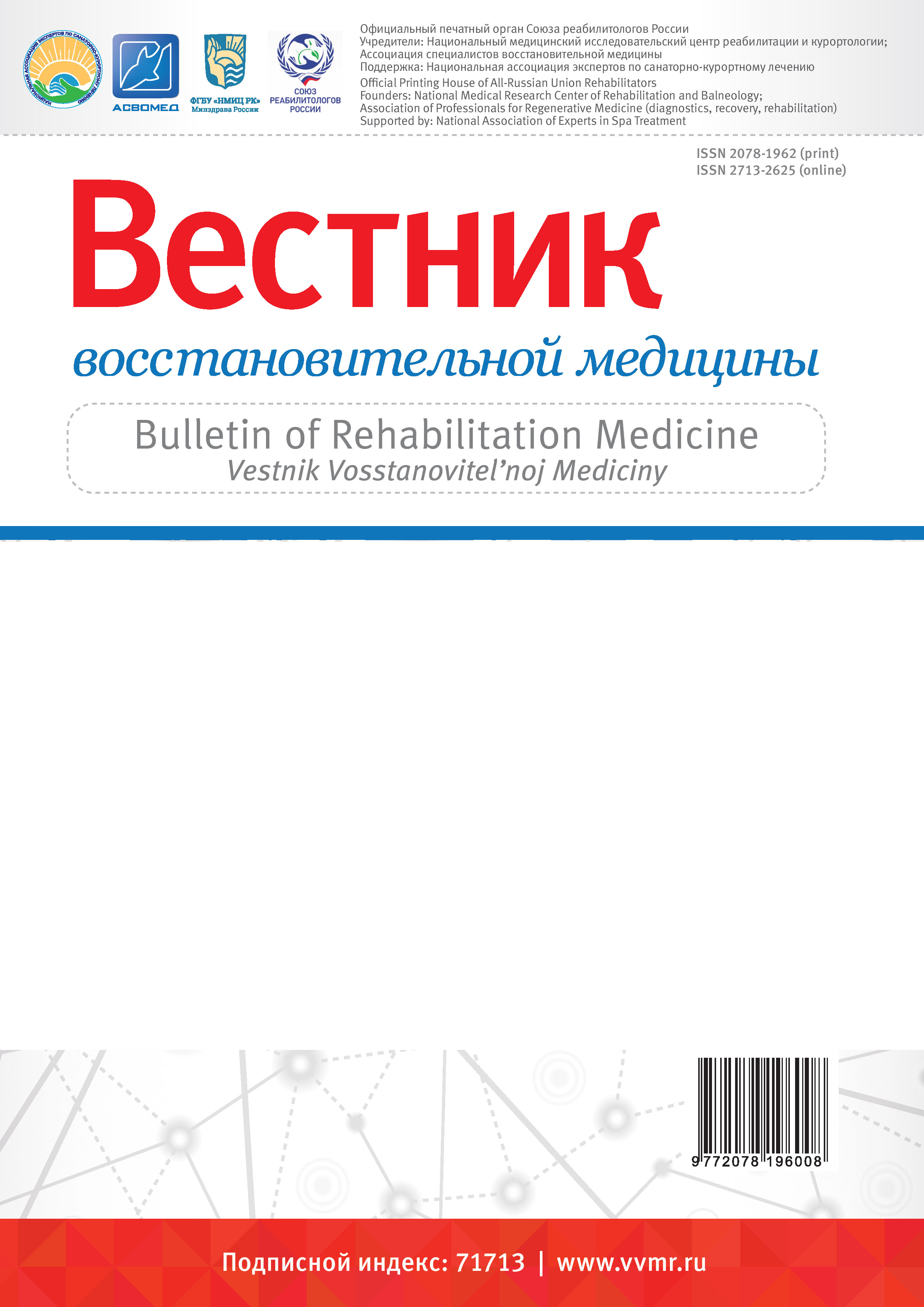Aim. To study the effect of the vitamin D receptor on bone metabolism disorders in premature infants born using in vitro fertilization (IVF). Material and methods. A study was conducted on 189 premature infants, divided into 2 groups. The first group is premature babies born using the IVF method. The second group - children were born naturally. The VDR receptor gene was analyzed depending on the observation groups. Results. It was found that in children born with IVF, the signs of osteopenia were more pronounced. Genetic studies have shown that the frequency of mutant allele *B and homozygous mutant genotype B/B of the VDR gene is more common in premature babies born with IVF. Mutant homozygous genotype B/B occurs in the main group of children with a frequency of 35%, which is significantly higher than in the control group of children (17%). Changes in bone metabolism are one of the important causes of musculoskeletal system disorders, which is closely associated with the molecular genetic polymorphism of the VDR gene. Conclusion. The studies conducted led to the following conclusion: the frequency of the mutant allele *B and homozygous for the mutant allele genotype B/B, occurs more often in premature babies born using IVF. The frequency of the *B allele in the group of premature babies born using IVF is 50%, which is higher than in the group of premature babies born naturally (40%). However, the identified genetic differences are not associated with the IVF procedure. These are combinations of gene alleles inherited from the parents. Knowledge of hereditary risk factors for low vitamin D3 levels can be of great practical importance for predicting bone metabolism disorders in premature infants.
receptor vitamina D, gen VDR, nedonoshennye deti, EKO
1. Engelman C.D., Meyers K.J., Iyengar S.K., Liu Z., Karki C.K., Igo Jr. R.P., Truitt B., Robinson J., Sarto G.E., Wallace R., Blodi B.A., Klein M.L., Tinker L., LeBlanc E.S., Jackson R.D, Song Y., Manson E. JoAnn, Mares J.A., Millen A.E. Vitamin D intake and season modify the effects of the GC and CYP2R1 genes on 25 hydroxyvitamin D concentrations. The Journal of Nutrition. 2013; 143(1): 17-26. https://doi.org/10.3945/jn.112.169482
2. Nissen J., Rasmussen L.B., Ravn-Haren G., Andersen E.W., Hansen B., Andersen R., Mejborn H., Madsen K.H., Vogel U. Common variants in CYP2R1 and GC genes predict vitamin D concentrations in healthy Danish children and adults. Plos One. 2014; 9(2): e89907. https://doi.org/10.1371/journal.pone.0089907
3. Boychuk A.V., Budnik T.A., Boyarchuk O.R. Obespechennost' beremennyh vitaminom D i ee vliyanie na antropometricheskie pokazateli novorozhdennogo. Voprosy pitaniya. 2020; 89(5): 80-88. https://doi.org/10.24411/0042-8833-2020-10068
4. Ekimov A.N., Aleksandrova N.V., Shubina E.S., Ritcher O.V., Gol'cov A.Yu., Nazarenko T.A. Genotipirovanie embrionov s pomosch'yu fragmentnogo str-analiza posle provedeniya polnogenomnoy amplifikacii. Akusherstvo i ginekologiya. 2021;(1): 126-132. https://doi.org/10.18565/aig.2021.1.126-132
5. Omarova N.H., Soltahanov E.M., Omarova P.A. Geneticheskie faktory deficita vitamina D3 i ih klinicheskoe znachenie. Ekologicheskaya medicina 2019; 2(1): 72-78. https://doi.org/10.34662/EM.2019. 2.1.72-78
6. Povoroznyuk V.V., Pludovski P., Balackaya N.I., Muc V.Ya. Deficit i nedostatochnost' vitamina D: epidemiologiya, diagnostika, profilaktika i lechenie. Kiev. 2015: 262 s.
7. Zaharova I.N., Klimov L.Ya., Yagupova A.V., Kur'yaninova V.A., Dolbnya S.V., Cucaeva A.N., Dyatlova A.A., Verisokina N.E., Al'himidi A.A., Minasyan A.K. Vnedrenie nacional'noy programmy po profilaktike i korrekcii gipovitaminoza D u detey: pervye rezul'taty v gruppe rannego vozrasta. Pediatriya. Zhurnal im. G.N. Speranskogo. 2021; (100): 67-74. https://doi.org/10.24110/0031-403X-2021-100-1-67-74
8. Kostrova G.N., Malyavskaya S.I., Lebedev A.V. Nedostatochnost' vitamina D i parametry uglevodnogo obmena u detey i podrostkov s ozhireniem. Voprosy pitaniya. 2021; (90): 57-64. https://doi.org/10.33029/0042-8833-2021-90-1-57-64
9. Savlevich E.L., Gorbunov S.A., Fel'shin D.I., Gerasimov A.N., Molodnickaya A.Yu. Analiz shem diagnostiki i lecheniya ostryh vospalitel'nyh zabolevaniy verhnih dyhatel'nyh putey po dannym polikliniki upravleniya delami Prezidenta RF. Pediatriya. Zhurnal imeni G.N. Speranskogo. 2021; (100): 136-14. https://doi.org/10.24110/0031-403X-2021-100-1-136-144
10. Harrison S.R., Li D., Jeffery L.E., Raza K., Hewison M. Vitamin D, Autoimmune Disease and Rheumatoid Arthritis. Calcified Tissue International. 2020; (106): 58-75. https://doi.org/10.1007/s00223-019-00577-2
11. Jiang W., Wu D.B., Xiao G.B., Ding B., Chen E.Q. An epidemiology survey of vitamin D deficiency and its influencing factors. Medicina Clinica (Barcelona). 2020; (154): 7-12. https://doi.org/10.1016/j.medcli.2019.03.019
12. Lv L., Tan X., Peng X., Bai R., Xiao Q., Zou T., Tan J., Zhang H., Wang C. The relationships of vitamin D, vitamin D receptor gene polymorphisms, and vitamin D supplementation with Parkinson's disease. Translational Neurodegeneration. 2020; (9): 34 p. https://doi.org/10.1186/s40035-020-00213-2
13. Bogdanova G.S., Zaydieva Z.S., Magomethanova D.M., Zayakin V.A. Nazarova E.A. Nevynashivanie beremennosti: obschiy vzglyad na problemu. Medicinskiy sovet. 2012; (3): 67-71.
14. Zaharova I.N., Mal'cev S.V., Borovik T.E., Yacyk G.V., Malyavskaya S.I., Vahlova I.V., Shumatova T.A., Romancova E.B., Romanyuk F.P., Klimov L.Ya., Pirozhkova N.I., Kolesnikova S.M., Kur'yaninova V.A., Tvorogova T.M., Vasil'eva S.V., Mozzhuhina M.V., Evseeva E.A. Rezul'taty mnogocentrovogo kogortnogo issledovaniya «Rodnichok» po izucheniyu nedostatochnosti vitamina D u detey rannego vozrasta v Rossii (2013-2014gg). Pediatriya. 2014; 13(6): 30-34. https://doi.org/10.15690/vsp.v13i6.1198
15. Zaharova I.N., Mal'cev S.V., Borovik T.E., Yacyk G.V., Malyavskaya S.I., Vahlova I.V., Shumatova T.A., Romancova E.B., Romanyuk F.P., Klimov L.Ya., Elkina T.N., Pirozhkova N.I., Kolesnikova S.M., Kur'yaninova V.A., Vasil'eva S.V., Mozzhuhina M.V., Evseeva E.A. Nedostatochnost' vitamina D u detey rannego vozrasta v Rossii (rezul'taty mnogocentrovogo issledovaniya: zima 2013-2014 gg.). Pediatriya. Zhurnal im. G.N. Speranskogo. 2014; 93(2): 75-80.
16. Garland C.F., Kim J.J., Mohr S.B., Gorham E.D., Grant W.B., Giovannucci E.L., Baggerly L., Ramsdell J.W., Zeng K., Heaney R.P. Meta-analysis of all - cause mortality according to serum 25-Hydroxyvitamin D. American Journal of Public Health. 2014; 104(8): 43-50.
17. Hossein-nezhad A., Spira A., Holick M.F. Influence of vitamin D status and vitamin D3 supplementation on genome wide expression of white blood cells: a randomized double-blind clinical trial. Plos One. 2013; (8): 3 p. https://doi.org/10.1371/journal.pone.0058725
18. Mohammad H.M., Mousazadeh S., Maleknia M., Takhshid M. Association of vitamin D deficiency with vitamin D binding protein (DBP) and CYP2R1 polymorphisms in Iranian population. Meta Gene. 2021; 27(4): 100824. https://doi.org/10.1016/j.mgene.2020.100824
19. Hiraki L.T., Major J.M., Chen C., Cornelis M.C., Hunter D.J., Rimm E.B., Simon K.C., Weinstein S.J., Purdue M.P., Yu K., Albanes D., Kraft P. Exploring the genetic architecture of circulating 25 - hydroxyvitamin D. Genetic Epidemiology. 2013; 37(1): 92-98. https://doi.org/10.1002/gepi.21694
20. Fleet J.C., Schoch R.D. Molecular mechanisms for regulation of intestinal calcium absorption by vitamin D and other factors. Critical Reviews in Clinical Laboratory Sciences. 2010; 47(4): 181-195. https://doi.org/10.3109/10408363.2010.536429
21. Kutihin A.G., Yuzhalin A.E., Ponasenko A.V. Sovremennye tendencii statisticheskoy obrabotki dannyh i predstavleniya rezul'tatov v kandidatnyh genetiko-epidemiologicheskih issledovaniyah. Fundamental'naya i klinicheskaya medicina. 2017; 2(2): 77-82. https://doi.org/10.23946/2500-0764-2017-2-2-77-82





